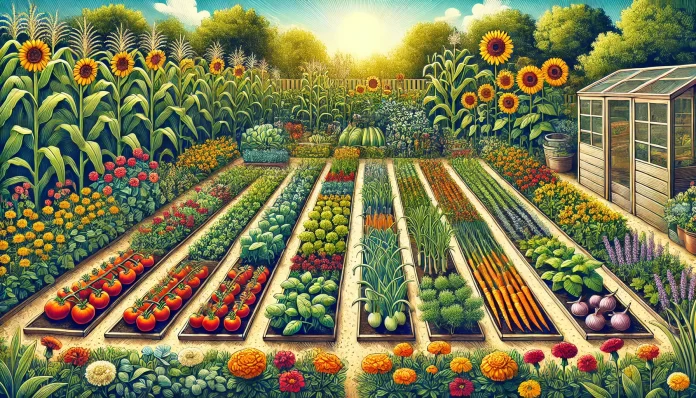| Month | What to Plant | Key Tasks |
|---|---|---|
| January | None (focus on planning and soil preparation). | Plan crop rotation, order seeds, clean tools, improve soil. |
| February | Sow tomatoes, chillies, aubergines indoors. | Prepare ground, install cloches, prune fruit trees/bushes. |
| March | Direct sow carrots, parsnips, radishes, broad beans. Plant onion sets and early potatoes. | Mulch fruit bushes, start compost heap. |
| April | Sow courgettes, cucumbers, and pumpkins indoors. Plant strawberries and asparagus crowns. | Protect seedlings, thin out young plants. |
| May | Plant out tomatoes, courgettes, peppers, beans, peas. Direct sow beetroot, spinach, and lettuce. | Weed regularly, set up supports for climbing plants. |
| June | Sow lettuce, radishes, spring onions, and pak choi. Plant out sweetcorn, squash, and cucumbers. | Harvest early crops, water regularly, apply organic feed. |
| July | Sow spinach, chard, kohlrabi, turnips, and late carrots. | Harvest beans, courgettes, soft fruits. Tie in tall plants. |
| August | Sow kale, winter lettuce, and oriental greens. | Harvest main crops (e.g., potatoes, onions). Save seeds. |
| September | Plant spring cabbages, sow hardy broad beans and peas for overwintering. | Harvest pumpkins, clear finished crops, net ponds. |
| October | Plant garlic, overwintering onions, and shallots. | Mulch bare soil, clean greenhouses, replant perennial herbs. |
| November | Plant bare-root fruit trees and bushes. | Prune late fruiting plants, spread compost, repair fencing. |
| December | None (focus on protection and planning). | Reflect on the year, plan next year, protect crops. |
Additional Notes:
- Adjust planting and harvesting times to suit your local climate.
- Rotate crops annually to avoid soil depletion and reduce pest risks.
- Keep a journal to track progress, successes, and lessons learned.




